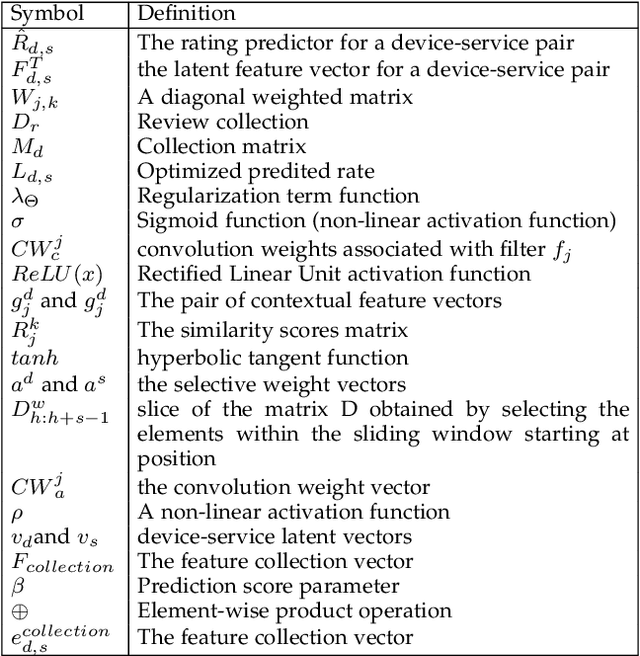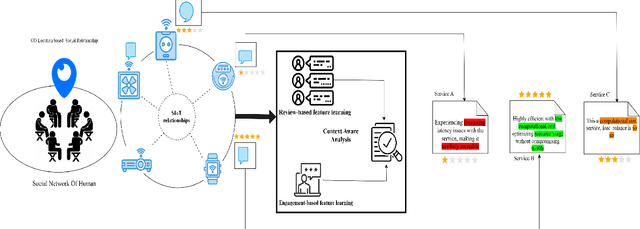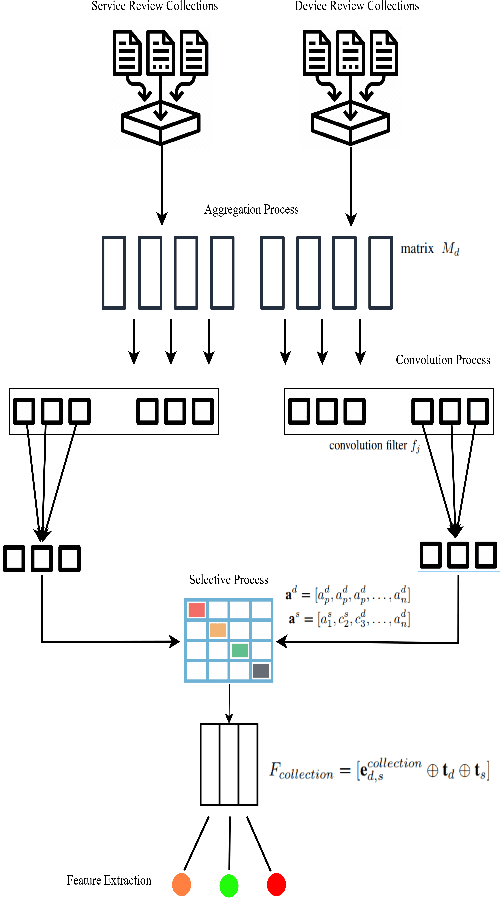Abdenacer Naouri
Maximizing UAV Fog Deployment Efficiency for Critical Rescue Operations
Feb 25, 2024



Abstract:In disaster scenarios and high-stakes rescue operations, integrating Unmanned Aerial Vehicles (UAVs) as fog nodes has become crucial. This integration ensures a smooth connection between affected populations and essential health monitoring devices, supported by the Internet of Things (IoT). Integrating UAVs in such environments is inherently challenging, where the primary objectives involve maximizing network connectivity and coverage while extending the network's lifetime through energy-efficient strategies to serve the maximum number of affected individuals. In this paper, We propose a novel model centred around dynamic UAV-based fog deployment that optimizes the system's adaptability and operational efficacy within the afflicted areas. First, we decomposed the problem into two subproblems. Connectivity and coverage subproblem, and network lifespan optimization subproblem. We shape our UAV fog deployment problem as a uni-objective optimization and introduce a specialized UAV fog deployment algorithm tailored specifically for UAV fog nodes deployed in rescue missions. While the network lifespan optimization subproblem is efficiently solved via a one-dimensional swapping method. Following that, We introduce a novel optimization strategy for UAV fog node placement in dynamic networks during evacuation scenarios, with a primary focus on ensuring robust connectivity and maximal coverage for mobile users, while extending the network's lifespan. Finally, we introduce Adaptive Whale Optimization Algorithm (WOA) for fog node deployment in a dynamic network. Its agility, rapid convergence, and low computational demands make it an ideal fit for high-pressure environments.
Selective Task offloading for Maximum Inference Accuracy and Energy efficient Real-Time IoT Sensing Systems
Feb 24, 2024Abstract:The recent advancements in small-size inference models facilitated AI deployment on the edge. However, the limited resource nature of edge devices poses new challenges especially for real-time applications. Deploying multiple inference models (or a single tunable model) varying in size and therefore accuracy and power consumption, in addition to an edge server inference model, can offer a dynamic system in which the allocation of inference models to inference jobs is performed according to the current resource conditions. Therefore, in this work, we tackle the problem of selectively allocating inference models to jobs or offloading them to the edge server to maximize inference accuracy under time and energy constraints. This problem is shown to be an instance of the unbounded multidimensional knapsack problem which is considered a strongly NP-hard problem. We propose a lightweight hybrid genetic algorithm (LGSTO) to solve this problem. We introduce a termination condition and neighborhood exploration techniques for faster evolution of populations. We compare LGSTO with the Naive and Dynamic programming solutions. In addition to classic genetic algorithms using different reproduction methods including NSGA-II, and finally we compare to other evolutionary methods such as Particle swarm optimization (PSO) and Ant colony optimization (ACO). Experiment results show that LGSTO performed 3 times faster than the fastest comparable schemes while producing schedules with higher average accuracy.
Task Offloading for Smart Glasses in Healthcare: Enhancing Detection of Elevated Body Temperature
Aug 14, 2023Abstract:Wearable devices like smart glasses have gained popularity across various applications. However, their limited computational capabilities pose challenges for tasks that require extensive processing, such as image and video processing, leading to drained device batteries. To address this, offloading such tasks to nearby powerful remote devices, such as mobile devices or remote servers, has emerged as a promising solution. This paper focuses on analyzing task-offloading scenarios for a healthcare monitoring application performed on smart wearable glasses, aiming to identify the optimal conditions for offloading. The study evaluates performance metrics including task completion time, computing capabilities, and energy consumption under realistic conditions. A specific use case is explored within an indoor area like an airport, where security agents wearing smart glasses to detect elevated body temperature in individuals, potentially indicating COVID-19. The findings highlight the potential benefits of task offloading for wearable devices in healthcare settings, demonstrating its practicality and relevance.
Context-Aware Service Recommendation System for the Social Internet of Things
Aug 14, 2023



Abstract:The Social Internet of Things (SIoT) enables interconnected smart devices to share data and services, opening up opportunities for personalized service recommendations. However, existing research often overlooks crucial aspects that can enhance the accuracy and relevance of recommendations in the SIoT context. Specifically, existing techniques tend to consider the extraction of social relationships between devices and neglect the contextual presentation of service reviews. This study aims to address these gaps by exploring the contextual representation of each device-service pair. Firstly, we propose a latent features combination technique that can capture latent feature interactions, by aggregating the device-device relationships within the SIoT. Then, we leverage Factorization Machines to model higher-order feature interactions specific to each SIoT device-service pair to accomplish accurate rating prediction. Finally, we propose a service recommendation framework for SIoT based on review aggregation and feature learning processes. The experimental evaluation demonstrates the framework's effectiveness in improving service recommendation accuracy and relevance.
Blockchain-based Optimized Client Selection and Privacy Preserved Framework for Federated Learning
Jul 25, 2023Abstract:Federated learning is a distributed mechanism that trained large-scale neural network models with the participation of multiple clients and data remains on their devices, only sharing the local model updates. With this feature, federated learning is considered a secure solution for data privacy issues. However, the typical FL structure relies on the client-server, which leads to the single-point-of-failure (SPoF) attack, and the random selection of clients for model training compromised the model accuracy. Furthermore, adversaries try for inference attacks i.e., attack on privacy leads to gradient leakage attacks. We proposed the blockchain-based optimized client selection and privacy-preserved framework in this context. We designed the three kinds of smart contracts such as 1) registration of clients 2) forward bidding to select optimized clients for FL model training 3) payment settlement and reward smart contracts. Moreover, fully homomorphic encryption with Cheon, Kim, Kim, and Song (CKKS) method is implemented before transmitting the local model updates to the server. Finally, we evaluated our proposed method on the benchmark dataset and compared it with state-of-the-art studies. Consequently, we achieved a higher accuracy rate and privacy-preserved FL framework with decentralized nature.
A Multi-Modal Latent-Features based Service Recommendation System for the Social Internet of Things
Jun 01, 2023Abstract:The Social Internet of Things (SIoT), is revolutionizing how we interact with our everyday lives. By adding the social dimension to connecting devices, the SIoT has the potential to drastically change the way we interact with smart devices. This connected infrastructure allows for unprecedented levels of convenience, automation, and access to information, allowing us to do more with less effort. However, this revolutionary new technology also brings an eager need for service recommendation systems. As the SIoT grows in scope and complexity, it becomes increasingly important for businesses and individuals, and SIoT objects alike to have reliable sources for products, services, and information that are tailored to their specific needs. Few works have been proposed to provide service recommendations for SIoT environments. However, these efforts have been confined to only focusing on modeling user-item interactions using contextual information, devices' SIoT relationships, and correlation social groups but these schemes do not account for latent semantic item-item structures underlying the sparse multi-modal contents in SIoT environment. In this paper, we propose a latent-based SIoT recommendation system that learns item-item structures and aggregates multiple modalities to obtain latent item graphs which are then used in graph convolutions to inject high-order affinities into item representations. Experiments showed that the proposed recommendation system outperformed state-of-the-art SIoT recommendation methods and validated its efficacy at mining latent relationships from multi-modal features.
Chatbots to ChatGPT in a Cybersecurity Space: Evolution, Vulnerabilities, Attacks, Challenges, and Future Recommendations
May 29, 2023Abstract:Chatbots shifted from rule-based to artificial intelligence techniques and gained traction in medicine, shopping, customer services, food delivery, education, and research. OpenAI developed ChatGPT blizzard on the Internet as it crossed one million users within five days of its launch. However, with the enhanced popularity, chatbots experienced cybersecurity threats and vulnerabilities. This paper discussed the relevant literature, reports, and explanatory incident attacks generated against chatbots. Our initial point is to explore the timeline of chatbots from ELIZA (an early natural language processing computer program) to GPT-4 and provide the working mechanism of ChatGPT. Subsequently, we explored the cybersecurity attacks and vulnerabilities in chatbots. Besides, we investigated the ChatGPT, specifically in the context of creating the malware code, phishing emails, undetectable zero-day attacks, and generation of macros and LOLBINs. Furthermore, the history of cyberattacks and vulnerabilities exploited by cybercriminals are discussed, particularly considering the risk and vulnerabilities in ChatGPT. Addressing these threats and vulnerabilities requires specific strategies and measures to reduce the harmful consequences. Therefore, the future directions to address the challenges were presented.
 Add to Chrome
Add to Chrome Add to Firefox
Add to Firefox Add to Edge
Add to Edge